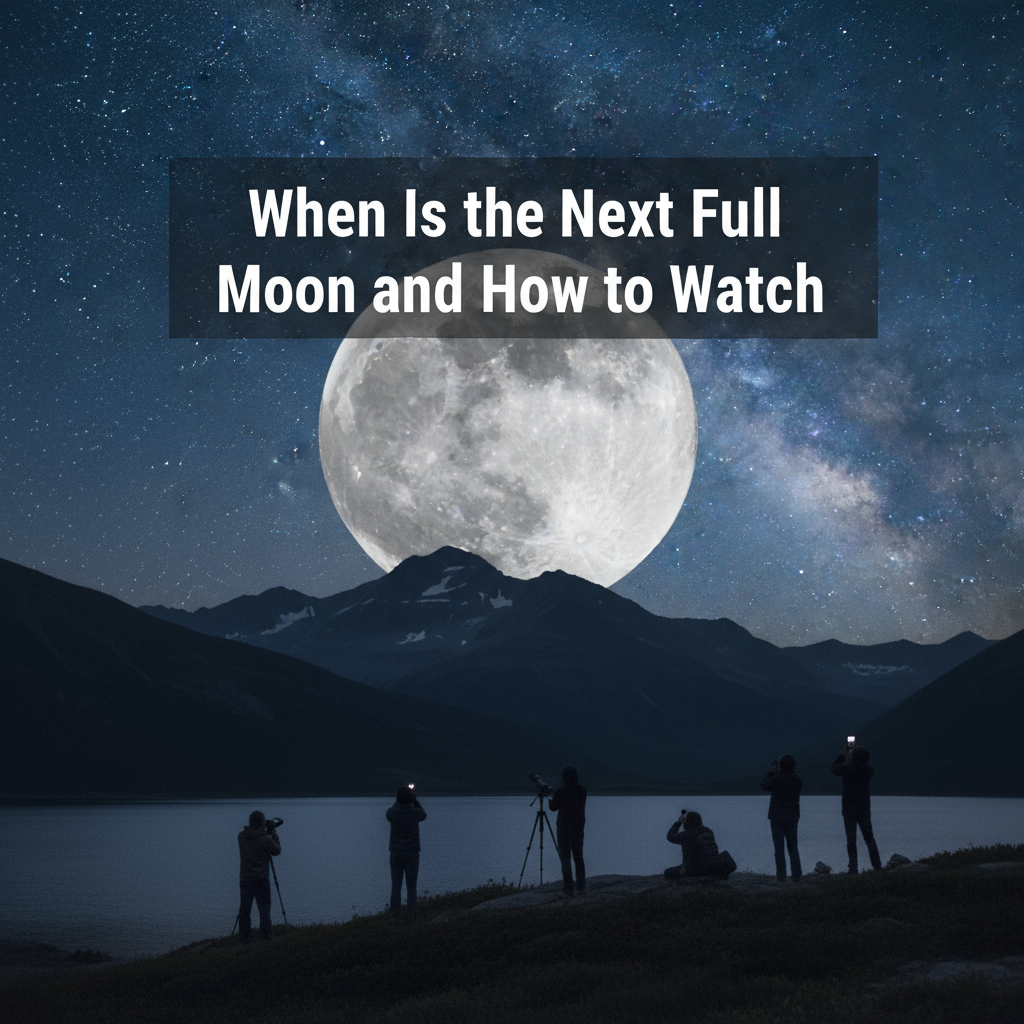When Is the Next Full Moon and How to Watch
Estimated Reading Time: 5 minutes
- Next full moon: October 6, 2025, at 11:47–11:48 p.m. EDT
- This full moon will be the Harvest Moon and a supermoon.
- Optimal viewing times: Full moon visible from October 5 to 7.
- Enhance your experience with binoculars or a telescope.
- Consider landscape elements for photography during moonrise.
Table of Contents
- The Significance of the Harvest Moon
- Timing and Viewing Experience
- How This Relates to Our Services
- Conclusion
- FAQ
The Significance of the Harvest Moon
The Harvest Moon is traditionally named due to its occurrence close to the autumnal equinox, which in 2025 will be on September 22. Historically, this full moon provided extra evening light that was beneficial for farmers during harvest time, allowing them to work late into the night (Time and Date). This year is unique as the October full moon will take on the title of the Harvest Moon, despite September usually hosting this full moon, as it falls closer to the equinox.
This full moon is also referred to as the Supermoon or Hunter’s Moon. It is interesting to note that a supermoon occurs when the moon is at its perigee—the closest point in its orbit to Earth—making it look more substantial and brilliantly lit in the night sky (Live Science).
Timing and Viewing Experience
The peak illumination of the Harvest Moon will occur on October 6, 2025, at 11:47–11:48 p.m. EDT (03:47–03:48 UTC on October 7, 2025). The full moon will rise around sunset and will remain visible throughout the night, setting approximately at sunrise the following morning (Astronomy). Expect to see the moon appearing particularly bright and full for several evenings around the peak date, specifically from October 5 to 7 (North Jersey).
When observing the full moon, there are a few key tips to enhance your viewing experience:
1. Find a Suitable Location
Head to an area with minimal light pollution and a clear horizon. This will allow you to experience the full moon’s glory in all its brightness and clarity. The moon will be low on the horizon shortly after it rises, potentially creating a dramatic visual for photography—this is due to atmospheric effects that can exaggerate its size and color.
2. Optimal Timing
As the moon rises in the east after sunset, it is worth finding a spot where you can see the horizon well. This is when the full moon often looks most impressive.
3. Use Optical Aids
While the full moon is bright enough to be enjoyed with the naked eye, binoculars or a small telescope can enhance your experience. These tools will allow you to observe the moon’s surface details, making your viewing experience even more fascinating (Live Science).
4. Plan for Photography
If you’re interested in capturing the beauty of the full moon, it’s ideal to plan your shot around moonrise, when it’s near the horizon. The nearby scenery can create fantastic compositions, so consider incorporating landscape elements into your photos.
5. Be Prepared for Variability
Keep in mind that the full moon’s appearance and timing may vary slightly based on your region. Adjust your viewing plans based on local time zones. For instance, in London, peak illumination will be at 4:48 a.m. on October 7 (Farmers Almanac).
How This Relates to Our Services
As a leading news organization in Canada, we understand the importance of celestial events such as the full moon, not only for scientific interest but also for how they captivate public imagination and inspire community engagement. Our content aims to keep you informed and enlightened about significant events that impact our world, both terrestrial and cosmic.
We believe that covering trending topics such as astronomical occurrences positions us as a trusted authority in the news industry. Such coverage enriches our content game, attracting a diverse audience interested in everything from local news to global events.
Explore More with Us
If you would like to dive deeper into the mysteries of the universe or stay updated on the latest happenings, we encourage you to explore our other blog posts and news articles related to astronomy and beyond. Stay informed, inspired, and connected with us. If you have any questions about our services or wish to have more specific information regarding upcoming events, don’t hesitate to contact us.
Conclusion
The October 6, 2025 Harvest Moon will not only mark an astronomical event to look forward to but also serves as a unique opportunity for exploration, beauty, and connection. Whether you are stargazing with friends or capturing breathtaking photographs, this moment will remind us of the wonders beyond our world.
Prepare yourself for an evening under the glow of the moon, and let us know how we can further enhance your exploration of the cosmos!
FAQ
When will the next full moon be? The next full moon will be on October 6, 2025, at 11:47–11:48 p.m. EDT.
What is a Harvest Moon? The Harvest Moon is the full moon that occurs closest to the autumnal equinox, traditionally aiding farmers with extra evening light during harvest time.
What defines a supermoon? A supermoon occurs when the moon is at its perigee, which is the closest point in its orbit to Earth, making it appear larger and brighter in the sky.
How can I enhance my full moon viewing experience? Choose a location with minimal light pollution, use binoculars or a telescope, and watch during moonrise for the best view.
Where can I find more astronomy-related content? Explore our other blog posts and news articles related to astronomy and contact us for specific inquiries.
